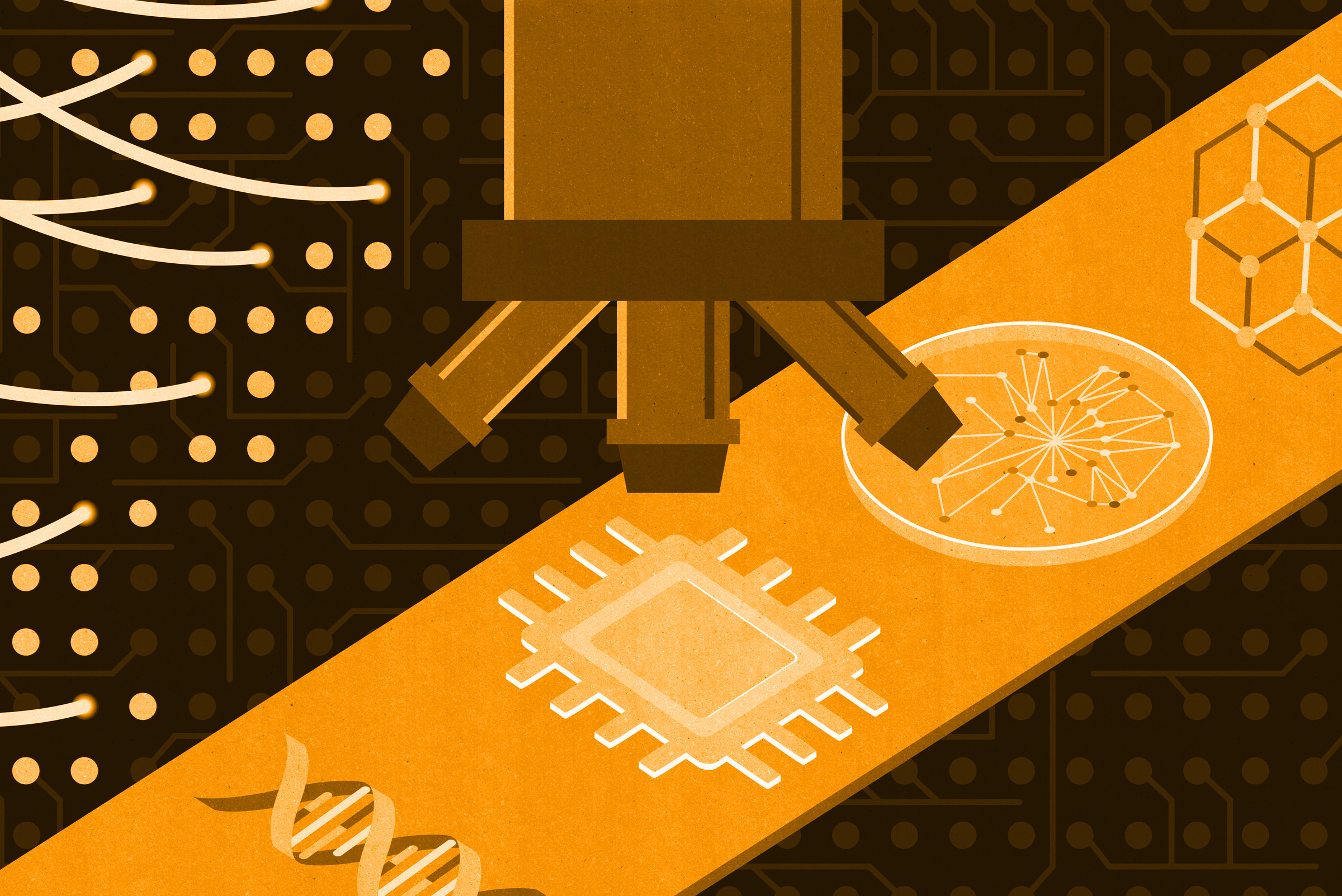By: Johnny Kung
13 Jan, 2021

CIFAR’s program in Quantum Materials brings together some of the world’s foremost experts, both theoreticians and experimentalists, in condensed matter physics, quantum physics, materials engineering and related fields. Program fellows are making breakthrough discoveries in synthesizing and understanding the properties of new materials that promise to form the basis for emerging quantum technologies that could revolutionize communications, computers and other sectors.
One of the key techniques for materials characterization in quantum materials research is neutron scattering. Because neutrons are electrically neutral particles, they can penetrate deeply into materials and provide insight into their atomic structures. And because neutrons interact with magnetic fields, they are crucial tools for probing the often unusual magnetic properties of quantum materials that in turn affect their electronic behaviour, such as superconductivity (where electric current can pass without resistance). Several CIFAR fellows are top experts in neutron scattering, advancing its application as well as shaping the policies and infrastructure for the technique.
Broadly, there are two classes of neutron scattering techniques: neutron diffraction (or elastic neutron scattering), which is useful for determining magnetic spatial distribution; and inelastic neutron scattering, which allows for probing magnetic fluctuations, excitations and other dynamic properties. In combination, neutron scattering techniques are central to our understanding of the magnetic structure and behaviour of quantum materials.
Recent research involving neutron scattering conducted by fellows in CIFAR’s Quantum Materials program and their collaborators include:
Birgeneau R et al. The Scientific Justification for a U.S. Domestic High-Performance Reactor-Based Research Facility. United States. doi:10.2172/1647598.
Buhariwalla CRC et al. 2018. Long-wavelength correlations in ferromagnetic titanate pyrochlores as revealed by small-angle neutron scattering. Phys. Rev. B 97:224401.
Clark L et al. 2019. Two-dimensional spin liquid behaviour in the triangular-honeycomb antiferromagnet TbInO3. Nat. Phys. 15:262–268.
Dragomir M et al. 2020. Materials preparation, single-crystal growth, and the phase diagram of the cuprate high-temperature superconductor La1.6−xNd0.4SrxCuO4. Phys. Rev. Mater. 4:114801.
Gaudet J et al. 2018. Magnetoelastically induced vibronic bound state in the spin-ice pyrochlore Ho2Ti2O7. Phys. Rev. B 98:014419.
Hester G et al. 2019. Novel strongly spin-orbit coupled quantum dimer magnet: Yb2Si2O7. Phys. Rev. Lett. 123:027201.
Hester G et al. 2020. Evidence for a field-induced quantum phase transition in Ising-like D-Er2Si2O7. arXiv. Preprint.
Kroder J et al. 2019. Spin glass behavior in the disordered half-Heusler compound IrMnGa. Phys. Rev. B 99:174410.
Liu I-L et al. 2020. Quantum oscillations from networked topological interfaces in a Weyl semimetal. npj Quantum Mater. 5:62
Neves PM et al. 2020. Effect of chemical substitution on the skyrmion phase in Cu2OSeO3. Phys. Rev. B 102:134410.
Qianli M et al. 2020. Parallel spin stripes and their coexistence with superconducting ground states at optimal and high doping in La1.6−xNd0.4SrxCuO4. arXiv. Preprint.
Sarkis CL et al. 2020. Partial antiferromagnetic helical order in single-crystal Fe3PO4O3. Phys. Rev. B 101:184417.
Sarkis CL et al. 2020. Unravelling competing microscopic interactions at a phase boundary: A single-crystal study of the metastable antiferromagnetic pyrochlore Yb2Ge2O7. Phys. Rev. B 102:134418.
Vir P et al. 2019. Anisotropic topological Hall effect with real and momentum space Berry curvature in the antiskrymion-hosting Heusler compound Mn1.4PtSn. Phys. Rev. B. 99:140406(R).
Wilfong B et al. 2020. Long-range magnetic order in hydroxide-layer-doped (Li1−x−yFexMnyOD)FeSe. Phys. Rev. Mater. 4:034803.
Yahne DR et al. 2020. Pseudospin versus magnetic dipole moment ordering in the isosceles triangular lattice material K3Er(VO4)2. Phys. Rev. B 102:104423.
Zhao K et al. 2020. Realization of the kagome spin ice state in a frustrated intermetallic compound. Science 367:1218.
CIFAR is a registered charitable organization supported by the governments of Canada and Quebec, as well as foundations, individuals, corporations and Canadian and international partner organizations.